When “The Matrix” was released in 1999, it was quickly recognized as a cultural phenomenon. Its blend of groundbreaking visual effects, gripping action, and deep philosophical questions captivated audiences worldwide. Yet, beneath the surface, “The Matrix” offers much more than just an entertaining science fiction story. It is a film rich with spiritual symbolism, many of which draw directly from Kabbalistic teachings. This article will explore how “The Matrix” aligns with Kabbalistic principles, focusing on Neo’s journey, the concept of reality and illusion, the significance of age in spiritual maturity, and the broader cultural impact of these parallels.
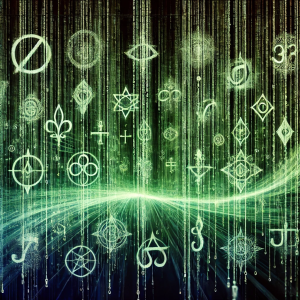
-
Save
Contents
- 1 The Journey of “The One” and the Kabbalistic Path to Enlightenment
- 2 The Concept of Ein Sof and the Illusion of Reality
- 3 The Role of Age in Spiritual Maturity: Neo and the Zohar
- 4 The Ten Sefirot and the Characters of The Matrix
- 5 The Red Pill, the Blue Pill, and the Choice of Spiritual Awakening
- 6 The Cultural and Spiritual Impact of The Matrix
- 7 Comparative Analysis: Neo’s Questions and the Wisdom of Kabbalah
- 8 Conclusion
The Journey of “The One” and the Kabbalistic Path to Enlightenment
Neo, the protagonist of “The Matrix,” embarks on a journey that leads him from being an ordinary computer hacker to discovering his destiny as “The One.” This journey mirrors the Kabbalistic path to enlightenment, where an individual seeks to ascend through various levels of spiritual awareness, ultimately aiming for unity with the divine.
In Kabbalah, the Tree of Life is a central symbol representing the structure of the spiritual world. It consists of ten spheres, or Sephirot, each corresponding to different aspects of creation and the divine. These Sephirot are interconnected, and the journey through them is one of spiritual ascent, where the seeker moves from the material world (Malkuth) to the highest state of divine consciousness (Keter).
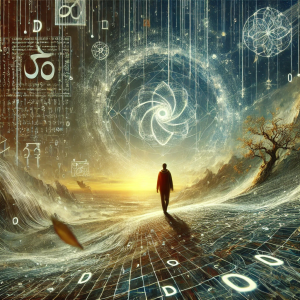
-
Save
Neo’s Journey Through the Tree of Life
Neo’s journey can be viewed as an allegory for this ascent. He begins in the realm of Malkuth, living in the illusion of the Matrix, unaware of the true nature of reality. As he progresses, guided by Morpheus and Trinity, he begins to ascend through the Sephirot. Each challenge and revelation brings him closer to the realization of his true identity as “The One.” This mirrors the Kabbalistic belief that each person has a divine spark within them, and through spiritual practice, they can realize their true nature and their connection to the divine.

-
Save
The Concept of Ein Sof and the Illusion of Reality
One of the core teachings of Kabbalah is the concept of Ein Sof, the infinite, boundless aspect of God that is beyond human comprehension. Ein Sof is the source of all creation, and it is through the emanation of the Sephirot that the universe comes into being. However, the material world is not the true reality; it is merely a reflection of the divine light that flows from Ein Sof.
The Matrix as an Allegory for Maya
In “The Matrix,” the physical world is revealed to be an illusion, a construct created by the machines to keep humanity enslaved. This concept parallels the Kabbalistic idea of Maya, the illusion that obscures the true nature of reality. Just as Neo must awaken to the truth of the Matrix, the Kabbalistic seeker must pierce through the veil of Maya to perceive the underlying reality of Ein Sof. This awakening is a key theme in both the film and Kabbalistic teachings, emphasizing the importance of recognizing the illusory nature of the material world and seeking a deeper, spiritual truth.
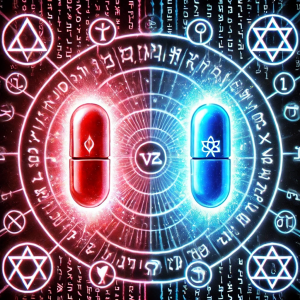
-
Save
The Role of Age in Spiritual Maturity: Neo and the Zohar
One of the most intriguing parallels between “The Matrix” and Kabbalah is the significance of age in spiritual awakening and maturity. In a key scene, Morpheus tells Neo, “We usually don’t disconnect someone from the Matrix if they haven’t turned 40.” This statement carries profound implications, particularly when viewed through the lens of Kabbalistic tradition.
The Sacred Zohar and the Age of 40
In Kabbalah, the Zohar is considered one of the most important texts, offering deep insights into the mystical aspects of the Torah. However, it is traditionally taught that one should not study the Zohar until they have reached the age of 40. This age is seen as a time when a person has attained sufficient life experience, wisdom, and spiritual maturity to comprehend the profound and often challenging teachings contained within the Zohar.
The film’s reference to the age of 40 as a threshold for awakening mirrors this Kabbalistic principle. Just as the Zohar is reserved for those who have reached a certain level of maturity, the truth of the Matrix is revealed to Neo only when he is deemed ready to handle it. This parallel highlights the importance of timing in spiritual development and the idea that certain truths can only be grasped when an individual has attained a certain level of personal and spiritual growth.
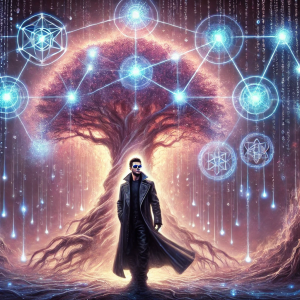
-
Save
The Ten Sefirot and the Characters of The Matrix
The characters in “The Matrix” can be seen as symbolic representations of the Ten Sefirot, each embodying different aspects of the divine attributes. This approach offers a deeper understanding of their roles and the dynamics of the narrative.
Comparative Analysis: Characters as Sefirot
- Neo (Keter): Neo represents Keter, the crown of divine consciousness. As “The One,” he is the embodiment of the highest level of spiritual enlightenment, symbolizing the unity with the divine that Kabbalists seek.
- Morpheus (Chokhmah): Morpheus is the wise mentor, guiding Neo on his journey. He embodies Chokhmah, the divine wisdom that illuminates the path to truth and understanding.
- Trinity (Binah): Trinity represents Binah, the divine understanding that nurtures and supports Neo on his path. Her role is to help Neo synthesize the wisdom he gains and apply it in his quest for enlightenment.
- The Oracle (Tiferet): The Oracle, who provides guidance and insight, represents Tiferet, the Sephira that harmonizes and balances the other attributes, bringing beauty and truth to the journey.
Each character’s interaction with Neo reflects the interplay of these divine attributes, guiding him along his spiritual path and helping him to realize his true potential.
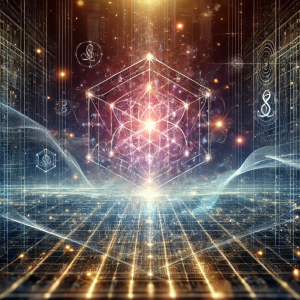
-
Save
The Red Pill, the Blue Pill, and the Choice of Spiritual Awakening
One of the most iconic scenes in “The Matrix” is when Neo is presented with a choice between the red pill and the blue pill. The red pill will awaken him to the truth, while the blue pill will allow him to remain in the comfortable illusion of the Matrix. This choice is a powerful metaphor for the spiritual journey, representing the decision to seek enlightenment or to remain in ignorance.
The Spiritual Significance of the Red and Blue Pills
In Kabbalistic terms, the red pill symbolizes the choice to embark on the path of spiritual awakening. This choice requires courage and a willingness to confront uncomfortable truths, but it ultimately leads to a deeper understanding of reality and one’s place within it. The blue pill, on the other hand, represents the decision to remain in the familiar but false reality, avoiding the challenges of spiritual growth.
This moment in the film resonates with the Kabbalistic concept of Tikkun, the process of spiritual rectification and transformation. Just as Neo must choose whether to pursue the difficult path of awakening, the Kabbalistic seeker must decide whether to engage in the work of Tikkun, striving to align their soul with the divine and repair the world.
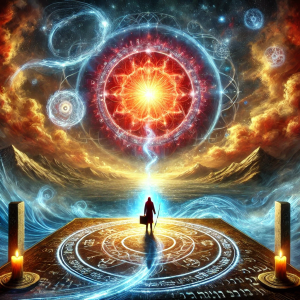
-
Save
The Cultural and Spiritual Impact of The Matrix
“The Matrix” not only captivated audiences with its innovative storytelling and visual effects but also introduced mainstream audiences to complex philosophical and spiritual concepts. Its cultural impact has been profound, particularly in how it brought Kabbalistic ideas into the public consciousness.
The Matrix and the Mainstreaming of Kabbalah
The success of “The Matrix” helped to popularize Kabbalistic concepts, making them more accessible to a wider audience. The film’s exploration of themes such as the illusion of reality, the nature of consciousness, and the pursuit of hidden knowledge resonated with viewers, encouraging them to seek out the spiritual teachings that underpinned these ideas.
The Filmmakers’ Inspirations: Kabbalistic References in The Matrix
While the Wachowski siblings, the creators of “The Matrix,” have drawn on a wide range of philosophical and religious influences, it is evident that Kabbalistic teachings played a significant role in shaping the narrative. The film’s use of symbolism, character development, and thematic exploration all point to a deep engagement with the mystical ideas of Kabbalah. For example, the film’s depiction of the Matrix as a constructed reality that must be transcended aligns with Kabbalistic teachings on the nature of the material world and the need for spiritual awakening.
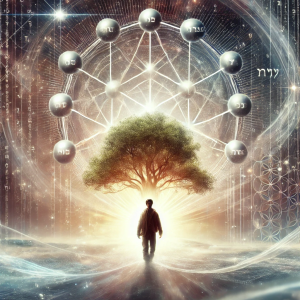
-
Save
Comparative Analysis: Neo’s Questions and the Wisdom of Kabbalah
In another poignant scene, Neo, overwhelmed by the revelations he’s facing, begins asking Morpheus a barrage of questions. Morpheus, sensing his anxiety, calmly tells him, “Rest, Neo. The answers are coming.” This statement, along with the earlier mention that people are not usually disconnected from the Matrix before they turn 40, provides a rich area for comparison with Kabbalistic teachings.
The Importance of Patience and Maturity in Kabbalistic Study
In Kabbalah, there is a strong emphasis on the importance of patience and spiritual maturity. The teachings of the Zohar, one of the most sacred texts in Kabbalah, are traditionally reserved for those over the age of 40. This is because the Zohar delves into profound and often complex mystical concepts that require a certain level of life experience and spiritual maturity to fully comprehend.
Morpheus’s advice to Neo reflects this Kabbalistic principle. By urging Neo to be patient and allowing the answers to come in their own time, Morpheus is teaching him an essential lesson in spiritual growth: that understanding often comes gradually, as one’s consciousness evolves and expands. The comparison with the study of the Zohar underscores the idea that spiritual truths are not always immediately accessible and must be approached with the right mindset and at the right time in one’s life.

-
Save
Conclusion
“The Matrix” is more than just a cinematic masterpiece; it is a modern allegory for the spiritual journey, deeply rooted in Kabbalistic symbolism and philosophy. By examining the film through the lens of Kabbalah, we can uncover layers of meaning that speak to the timeless quest for truth, enlightenment, and unity with the divine. Whether through Neo’s journey, the symbolic use of the red and blue pills, the characters representing the Ten Sefirot, or the parallels with the study of the Zohar, “The Matrix” invites us to explore the mystical codes that lie beneath its surface and to reflect on our own spiritual paths.
The intersection of modern cinema and ancient mysticism found in “The Matrix” continues to resonate with audiences, offering a compelling narrative that challenges us to question the nature of reality, the purpose of our existence, and the path to spiritual awakening. Through its rich symbolism and philosophical depth, “The Matrix” serves as a powerful reminder of the enduring relevance of Kabbalistic teachings in the modern world.
This exploration not only deepens our understanding of the film but also highlights the profound connections between contemporary storytelling and ancient spiritual traditions, demonstrating that the search for truth and enlightenment is a universal journey that transcends time and culture.
Dr. David Cohen is a certified Kabbalah healer and holistic sexuality counselor with a Ph.D. in Integrative Health. With over 15 years of experience, he specializes in using Kabbalistic teachings to promote healing from sexual trauma and enhance overall well-being. Dr. Cohen conducts workshops and private sessions that integrate spiritual wisdom with modern therapeutic techniques to help individuals release past traumas and cultivate a healthy, fulfilling sexual life. His approach blends ancient Kabbalistic practices with contemporary holistic health methods to foster deep healing and personal growth.
- David Cohenhttps://guides.adultfriends.com/author/drdavidcohen/
- David Cohenhttps://guides.adultfriends.com/author/drdavidcohen/
Share via:


